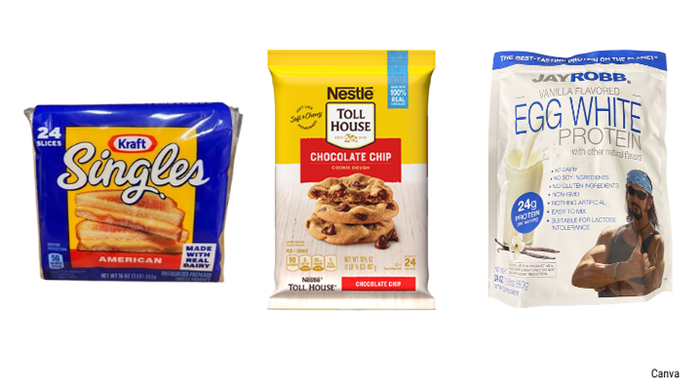When Food Packaging Fails: The Rise in Recalls
How fine-tuned packaging processes play a critical role in curbing the sharp rise in food recalls by brand owners that include Kraft Heinz, Nestlé, and ConAgra.

Overall product recalls in the US are on track to reach a five-year high, according to Sedgewick, a risk and benefit assessment firm.
USDA food recalls represented the only category across all the industries that increased from Q2 to Q3 in terms of recall events and impacted units. There were 18 USDA recalls in Q3 2023, up from 17 in Q2 2023. The number of units rose to 467,811 pounds, an increase of 27.9%.
On the FDA side, the total number of food recalls fell by 14.4% in Q3 2023 compared to the previous quarter. The number of units decreased even more, falling from 114.06 million units in Q2 to 40.20 million in Q3, a decline of 64.8%.
While the lion’s share of food and beverage recalls are due to the inclusion of undeclared/unlabeled ingredients and allergens, and bacterial contamination that could trigger foodborne illnesses, a small but noteworthy amount have been attributed to faulty packaging.
In September, Kraft Heinz voluntarily recalled nearly 84,000 select cases of its Kraft Singles American processed cheese slices, citing a packaging defect that caused the potential for film to remain adhered to the cheese slice after the wrapper has been removed.
According to a statement from the megabrand, the recall was “a precaution after a temporary issue developed on one of its wrapping machines, making it possible that a thin strip of the individual film may remain on the slice after the wrapper has been removed.”

More than just an unpleasant inconvenience, the issue was discovered after the company received several consumer complaints about finding the plastic stuck to a slice, including six complaints of consumers saying they choked or gagged in connection with the issue. No injuries or serious health issues have been reported, according to the company, and the wrapping machine associated with the affected slices, as well as all other processing machines, were thoroughly inspected and fixed.
Foreign contaminants were also a red flag recall factor. Nestlé’s voluntary recall of Nestlé Toll House Chocolate Chip Cookie Dough “Break and Bake” Bar products centered on the potential presence of wood fragments. And plastic matter was the culprit for Banquet brand frozen chicken strips from ConAgra and Jay Robb’s vanilla egg white protein product.
Recalls are triggered more by external factors than by the packaging.
Why is the packaging to blame? The onus lies less on the part of packaging and more on the part of external factors, says Claire Sand, owner of Packaging Technology and Research, which focuses on packaging science and value chain solutions that ensure food safety.
“Food packaging is required to comply with GFSI (Global Food Safety Initiative) and HACCP (Hazard Analysis Critical Control Point) processes [and] one can argue the food is as well,” she says. “We are finding Listeria, eColi, and Salmonella in places where it has not been before.”
And while the root cause of these contaminations is usually unrelated to packaging, proximity can mean everything. “Packaging is typically produced, nested (in the case of rigid packaging), or wound so that the inner direct food contact layer is not exposed until just prior to use,” Sand says. “Most are related to the proximity of feedlots to where crops are grown, contamination during washing, cross contamination, and high initial microbial counts.”
However, don't underestimate packaging's role in preventing a recall.
“Packaging has a critical role to play in providing antimicrobials and the means to use modified atmosphere packaging (MAP) to serve as the last line of defense and withstand sterilization temperatures,” Sand explains.
"Packaging technologies are constantly being fine-tuned for improved efficiencies to help eliminate the far-reaching effects of recalls. In addition to GFSI and HACCP compliance, food and beverage producers are putting other measures into practice too.
“Most packaging suppliers submit a COA (certificate of analysis) with TBC (Total Bacterial Counts) and other critical measurements with each load [and] reinforcing the use of COA measurements as related to pathogens such as Listeria, eColi, and Salmonella is likely to expand,” Sand continues. “Food manufacturers [also] have policies in place such as no corrugated in food processing areas.”
She notes that one area that could be helpful going forward is the sterilization of packaging prior to use with options like UV light, with or without hydrogen peroxide.
“We often sterilize packaging and product at the same time as well as with MATS (Microwave Assisted Thermal Sterilization) and retort processing,” Sand says.
Looking ahead, Sedgewick advises manufacturers to keep an eye out for changes to the FDA’s foods program in 2024. At the beginning of 2023, the FDA announced it was planning a major overhaul to address what it claims are “identified deficiencies,” though the timeline and specifics have yet to be specified.
For now, the firm suggested manufacturers pay close attention to the FDA’s Hazard Analysis and Risk-Based Preventive Controls for Human Food: Guidance for Industry Draft Guidance. Issued in September 2023, the guidance is intended to, among many things, help companies understand the physical hazards that are commonly of concern in manufacturing, processing, packing and holding of FDA regulated food products.
About the Author(s)
You May Also Like




